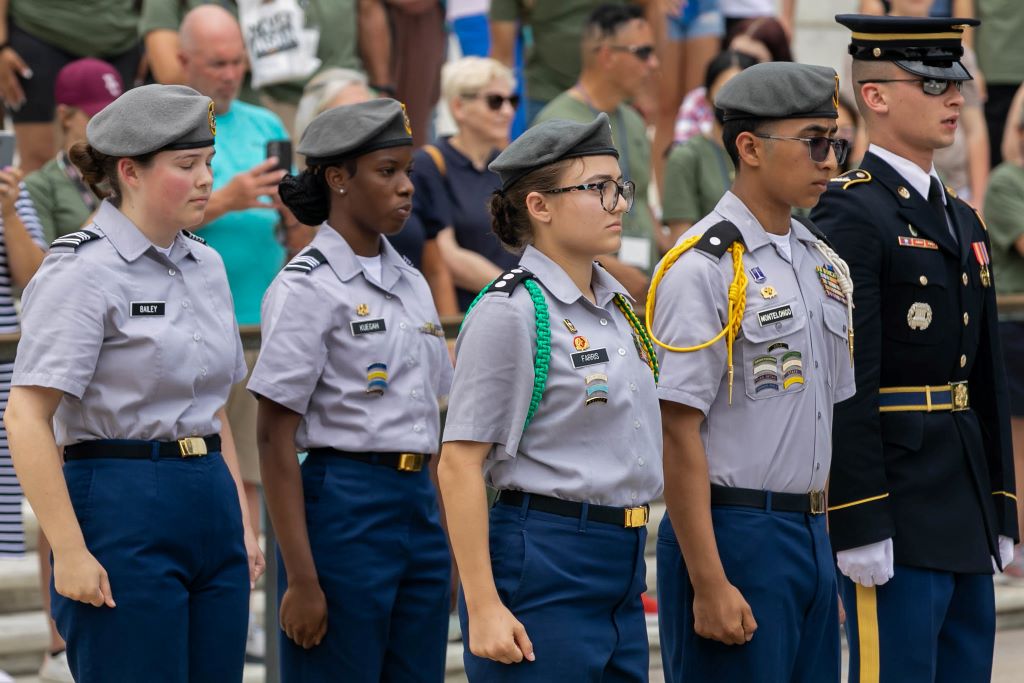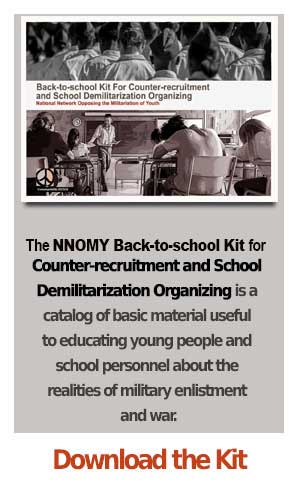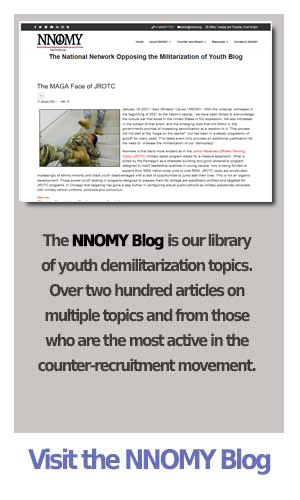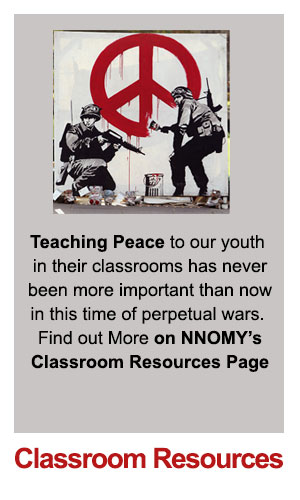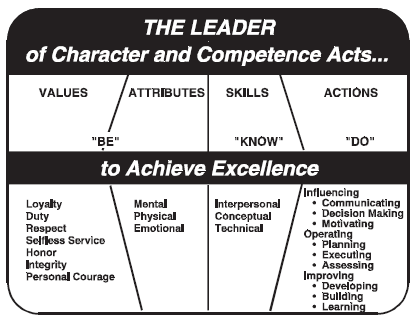 July-September 2022 / Lauren Reyna Morales / Draft NOtices - In the summer of 2020, I was recruited by the non-profit Project on Youth and Non-Military Opportunities (Project YANO) to review core textbooks used by the U.S. military in the high school Junior Reserve Officers Training Corps (JROTC) program. Project YANO organized a team of 15 reviewers that consisted of individuals with backgrounds in either classroom teaching or education activism, or with special knowledge of subjects that JROTC claims to address in its curriculum (e.g., U.S. and world history, geography, leadership methods, etc.).
July-September 2022 / Lauren Reyna Morales / Draft NOtices - In the summer of 2020, I was recruited by the non-profit Project on Youth and Non-Military Opportunities (Project YANO) to review core textbooks used by the U.S. military in the high school Junior Reserve Officers Training Corps (JROTC) program. Project YANO organized a team of 15 reviewers that consisted of individuals with backgrounds in either classroom teaching or education activism, or with special knowledge of subjects that JROTC claims to address in its curriculum (e.g., U.S. and world history, geography, leadership methods, etc.).
In total, eleven Army, Navy, and Marine Corps JROTC texts were reviewed. The reviewers included current and retired teachers, military veterans, and several educators with post baccalaureate credentials. I myself have been a classroom teacher for five years. I’m credentialed to teach English and Social Sciences in the state of California, and I also earned an M.A. in education from the University of Colorado, Denver. I personally reviewed an Army JROTC textbook titled, Leadership Education and Training (LET 3). I was eager to investigate the kind of curriculum JROTC utilizes to influence over 550,000 students at approximately 3,400 high schools. What, I wondered, is the U.S. military teaching to youth in their places of learning?
 "Student loan forgiveness undermines one of our military's greatest recruitment tools at a time of dangerously low enlistments," Banks wrote in a tweet as Republicans continue to attack the White House for the announcement that it would be canceling $10,000 in student loan debt for millions of Americans.
"Student loan forgiveness undermines one of our military's greatest recruitment tools at a time of dangerously low enlistments," Banks wrote in a tweet as Republicans continue to attack the White House for the announcement that it would be canceling $10,000 in student loan debt for millions of Americans.
Though the White House is limiting forgiveness to those making under $125,000 per year, conservatives have attempted to paint the plan as a handout to the rich. Banks's comment appears to undercut that message, implying that lower-income Americans might no longer see joining the military as a path to a college education that wealthier families can typically afford without volunteering for service.


